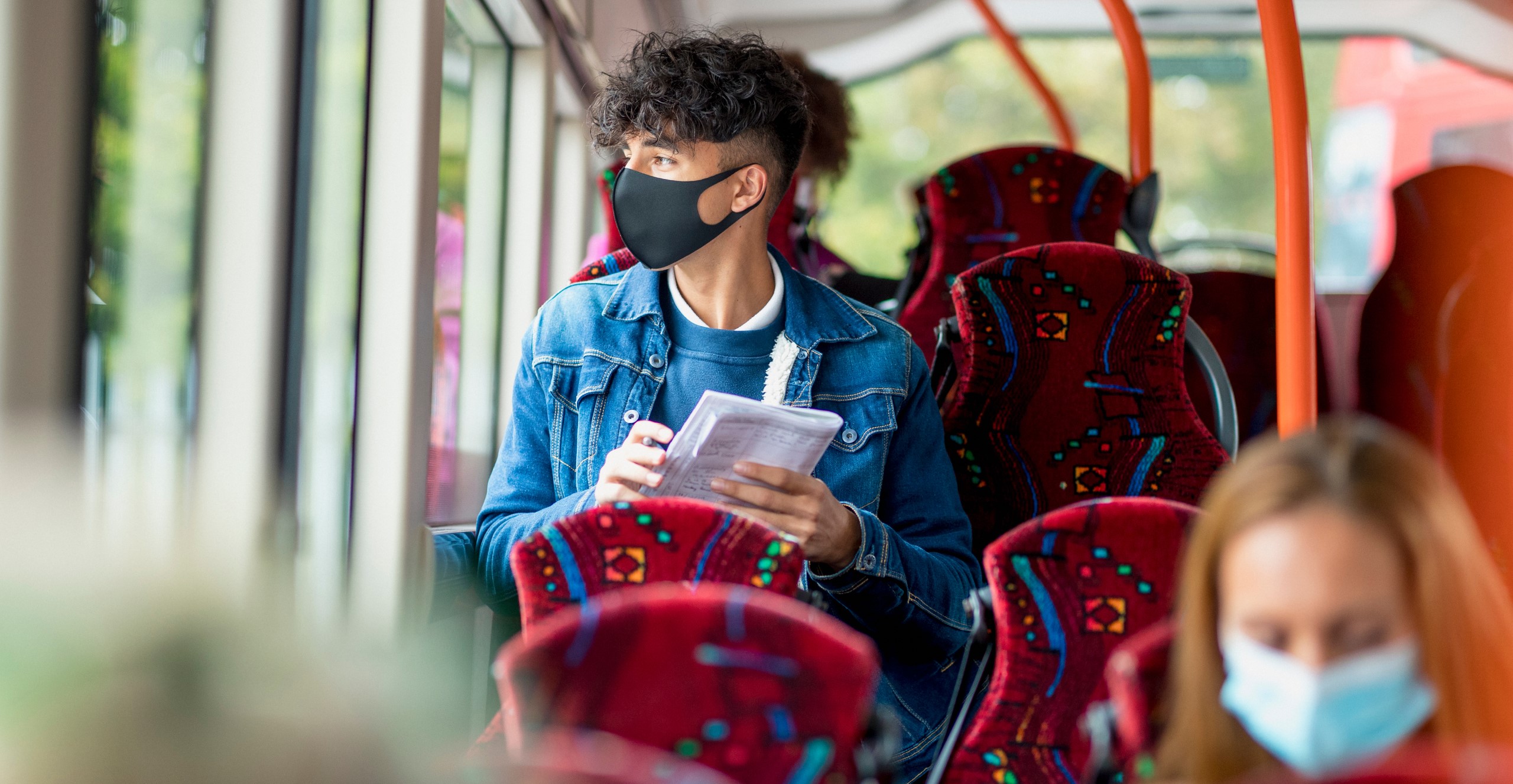Over the last years, the global awareness around climate change has seen a rapid increase. No longer confined to scientific research papers and conferences, the future of our world is now publicly addressed. After the signing of the Paris Agreement, the topic was further personalised by the likes of Swedish activist Greta Thunberg and Extinction Rebellion.
2020 changed all of that. We started the year with events of almost biblical proportions - droughts, fires, floods, and now a global pandemic. For the first time since 1918, when the Spanish Flu claimed anywhere between 20 – 50 million lives, we are faced with something entirely different on an international scale. Thanks to our highly interconnected lives, the virus knows no borders.
It has been months since nations around the world issued orders to stay at home. As we are slowly preparing for a gradual return to work, the question arises of how best to travel. While concerns around infection and social distancing might entice us to make increased use of our cars – the safety these small metal boxes provide has never seemed so inviting – we should not forget the environmental impact when making our collective decision.
Public transport and social distancing do not sit together
During the hight of the pandemic, usage of public transport had fallen by up to 90% on some of the world's oldest and storied transit networks: the London Underground, the Paris Metro, New York Subway and Tokyo's infamously packed trains. Will these commuters ever come back? In some parts of Asia, where business is opening up again, people are only gradually venturing back onto trains. According to data compiled by Bloomberg, morning traffic on the streets of Beijing, Shanghai and Guangzhou is now higher than compared to 2019 averages while subway use is well below these levels. First signs point to a slow return to normalcy for public transport usage.
If we decided to make social distancing guidelines a more permanent part of our lives, it seems undeniably clear that without significant changes we could not go back to pre COVID-19 occupancy levels of our public transport systems. The good news is that authorities can choose from an array of strategies and technologies to bring commuters back safely. These can be broadly grouped into two categories: minimising the risk of contagion within existing constraints and significantly expanding our transport systems to accommodate social distancing.
In the short term, new spacing guidelines in stations, on platforms and inside vehicles could help preserve safe distancing between passengers, while we put even more emphasis on hygiene via additional deep cleaning and disinfecting of surfaces. Effective and transparent communication is also key. Operators have been clear from the start: only travel when necessary, and this message needs continued reiteration. Contact tracing technology – so far mostly seen in Asian countries – is yet another effective way of locating potentially contagious individuals and ensuring they do not pose a risk to fellow commuters.
Ultimately, we must also think about the design of our public transit modes. Bus and train car interiors can be reconfigured to offer seats which are spaced farther apart and compartmentalised. Continued automation of payment systems would allow even better protection for drivers and service staff by avoiding unnecessary human interaction. In the interim, we will have to think about workable short-term solutions, such as disabling front-door boarding on buses to protect the driver even further.
The above measures might decrease the risk of contagion but will mean a reduced load factor of our public transport systems, leading to significant delays and longer commutes.
Ideally, we would increase capacity across all modes, but this poses significant technical problems and would certainly not be financially feasible. After all, most public transport authorities are already operating with stretched budgets.
While we look for ways to solve this, we can certainly expect commuters to look for alternative modes of transport.
Back to the future, err the car!
Studies – such as during the UK 2008-2009 influenza season – have shown that people who rode public transport were six times more likely to contract a respiratory illness. The natural reaction is for people to retreat to their private cars or, where feasible, make use of taxis or car-sharing services, as we have already seen happening across many Asian cities.
London Black Cabs and New York’s Yellow Taxis are already fitted with screens separating driver and passenger - now also seen in supermarkets and chemists – which will give users confidence. Quickly catching up, Addison Lee and Uber have announced new safety measures, such as fitting partition screens and making their drivers and passengers wear face masks.
Whilst, taxis and ride hailing services are generally looked after by their respective drivers, car-sharing services such as Zipcar, BlueSG or Ola Cabs pose yet a different challenge as they do not require person-to-person contact when being picked up and can also be used by multiple customers in quick succession. In fact, Zipcar even said that it is unable to professionally clean cars after each booking but that vehicles are “regularly and rigorously cleaned using our sanitizing procedures.” Hygiene concerns around multiple users touching the same surfaces may prove to be a deterrent to consumers.
But this is also not a solution
There are multiple reasons, however, for why we may want to avoid reverting to increased car usage. Studies have linked excessive time in the car to higher risk of developing obesity, a strong predicator of diabetes and heart disease. At the same time, the European Emissions Authority estimates that cars are responsible for around 60% of total transport CO2 emissions, not only a significant contributor to air pollution, but also to climate change. While these are all “far” risks, not immediately impacting our health and thus not at the forefront of public concern at this time of crisis, they nonetheless have the potential to alter our lives in fundamental ways.
When making decisions about our modes of transport going forward, it will be a balancing act trying to accommodate social distancing while working towards achieving our collective environmental goals and ensuring we do not lose the hard-won progress of the last years.
So, it is back to walking and perhaps cycling
There are of course other alternatives to vehicles. Pre COVID-19, many cities have struggled to keep their cyclists safe as they have prioritised drivers to avoid congestion. However, global lockdowns have changed this dramatically. Both bike use and shared bike use is up in many cities, and local governments across major European cities are even rolling out pop-up infrastructure to accommodate the boost. New measures, such as setting up temporary bike lanes and creating more bike parking are now being accelerated. London announced plans to create the largest car-free zones in Europe, while Milan and Paris have also introduced ambitious cycling and walking schemes. Lockdown may present the opportunity for citizens to reclaim the streets, reducing air pollution and adhering to social distancing guidelines.
Working from home = the new normal
At the same time, there seems to be one question that has so far been under-addressed. Have we considered that perhaps we are not faced with the dichotomy between exposure to the virus or increased air pollution, but instead simply a work culture issue? Here, the pandemic may have helped in altering our perspective. Work that only requires a computer and internet connection does not necessarily require people to be in the office five times a week. Many such businesses can in fact thrive under lockdown and some of the global tech giants were quick to act. While Facebook announced it will allow its employees to continue to work from home through the end of 2020, Twitter declared that it will let its staff work from home “forever”, and Amazon extended its work-from-home policy until at least early October.
If we collectively, and where possible, adjust our work culture accordingly, we could even further reduce congestion, air pollution, crowding on public transport and help avoid the spread of diseases on mass transit.
While we figure out how to operate under the “new normal” let us take a step back and appreciate that we can also use this pandemic as an opportunity to adapt our collective behaviour and create a more sustainable world. The environment and our future generations will thank us for it.






